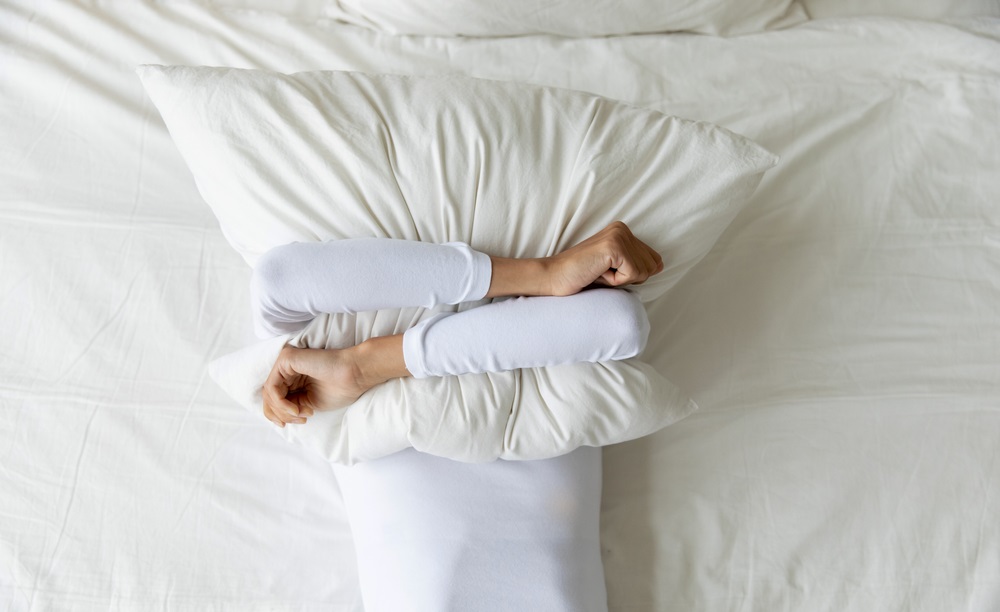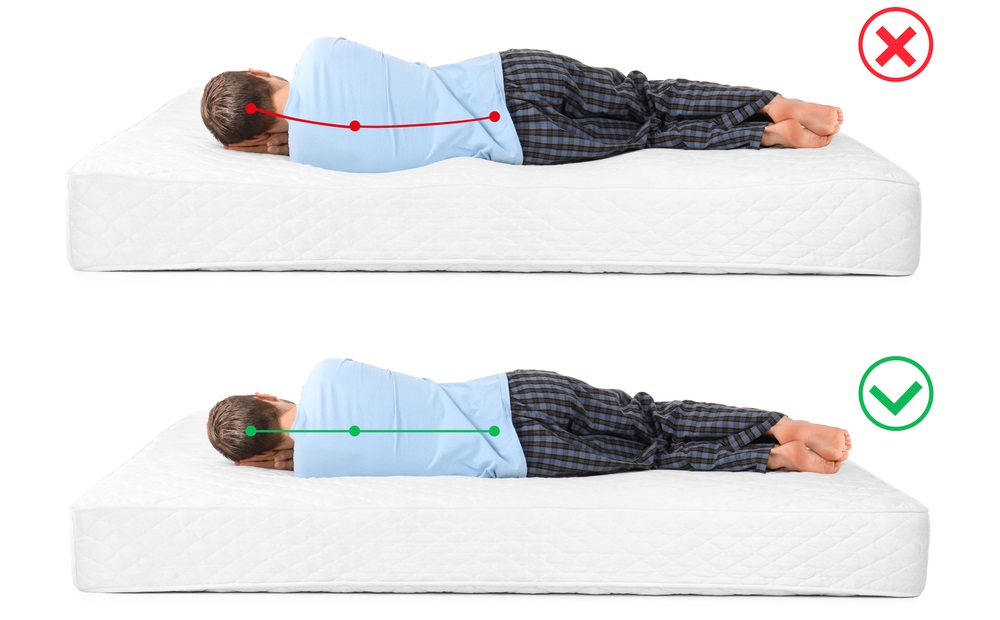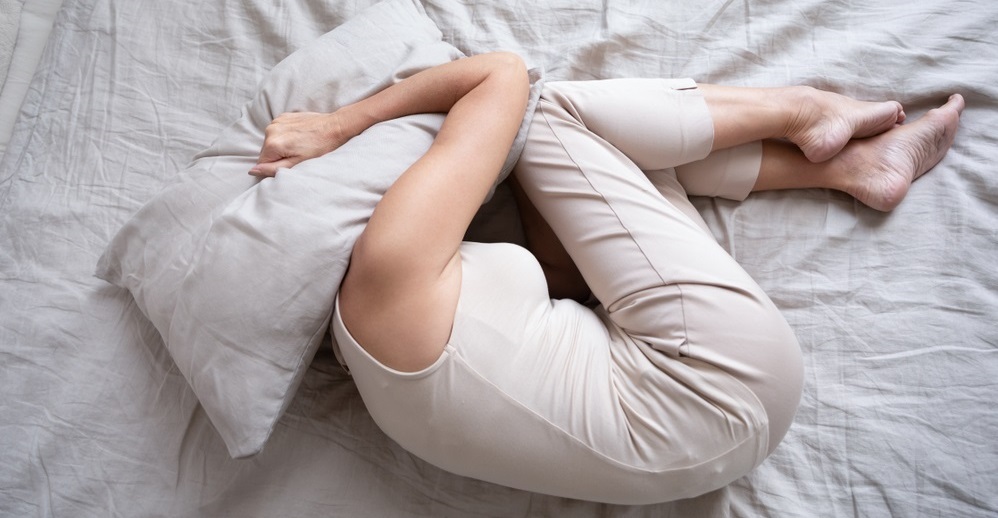Sleep is emerging as one of the most important aspects of human health. Lack of adequate sleep can contribute to many long-term health complications, including obesity, diabetes, depression, hypertension, heart disease, and stroke. The recommended amount of sleep per night for adults is 7 to 9 hours every day of the week.
Most people have a particular preference when it comes to their sleep position. More than half of adults prefer side-lying, while a third prefer sleeping on their back. Lying on the left side is preferred by more individuals than lying on the right side. Sleeping prone (on your stomach) is the least preferred sleep position in adults.
Your preferred sleep position can enhance or harm your overall health. While some can sleep in any position without difficulty, most of us run the risk of low back pain, hip pain, neck pain, worsened sleep apnea, and other symptoms based on how we sleep.
Let’s look at the science of sleep positions and the health implications of each of them.
The Science Behind Sleep Positions
There are four basic sleep positions and a few variations of each. Sleeping supine means you sleep on your back. You may sleep without a pillow at all or with a pillow that flexes your neck forward while sleeping.
Prone sleeping means you sleep on your stomach. In order to breathe, however, you normally need to sleep with your head turned to one side or the other. Side-sleepers can sleep on either side preferentially.
In general, most people benefit from maintaining a natural spinal alignment during sleep. A healthy spine is never straight; instead, when looking at a person from the side, you will see natural inward (concave) curvatures in the upper lumbar region (below the waistline) and neck areas.
If you look at a person’s back from behind, however, there should be no spinal twisting or sideways curves. We tend to stick with a sleep position that feels more comfortable, particularly when settling into bed.
While this method of sleeping “comfortably” works most of the time, it is possible that what feels good while drifting off to sleep is not helping you sleep comfortably all night long. It also may not be good for your health.
Identifying Bad Sleep Positions
You may hear that this or that sleep position is the best (or worst) for your health. You may also find that a sleep position you have always slept in comfortably now leaves you with body pain upon awakening. How can this happen?
Sleep postures are often affected by the mattresses and pillows you’re using. A mattress you’ve felt was perfectly comfortable when you first bought it may sag over time or lose its natural springiness, leaving you with one that now contributes to back or neck pain.
Pillows are common causes of neck pain during the night, especially if it has lost its natural shape. Poor sleep posture can develop over time, even if your mattress and pillow stay the same.
Side-lying postures can go from supporting your spine to being “provocative,” which means it causes spinal twisting that can lead to back pain. You may not even know that you’ve made the switch from an optimal sleeping posture to one that is causing lower back pain or neck pain.
If you are not sure of your preferred sleep position, there are a few things you can do. Pay attention to the sleep position you most commonly fall asleep with. Do the same thing as you study the position you awaken in.
If you have a sleep partner, ask them if you change positions frequently. Lastly, you can try wearing a fitness watch that assesses how restless your sleep is during the nighttime hours to see if you change positions often.
Impact on Health and Well-Being

Your sleep position can affect more than your spine. Individuals who chronically sleep on their back have a higher risk for sleep apnea and resultant daytime sleepiness. Breathing is naturally harder for everyone when sleeping supine because the throat collapses during sleep.
People with heart failure or heartburn will have more difficulty sleeping supine as well. Your spine should be kept in a neutral position with its natural curvatures intact during sleep.
Lying on your side is good if your mattress and pillow help you stabilize the spine. A pillow that is too flat or too tall can lead to chronic neck pain and headaches. Simply turning and tossing during sleep because of pain can worsen sleep quality enough to affect your overall health.
In general, sleeping on your side is best for heartburn, pregnancy, sleep apnea, and back pain (as long as your mattress is supportive). Sleeping on your back may be better if you suffer from neck pain or nasal congestion or if you are worried about getting facial wrinkles. Sleeping prone is rarely beneficial unless you have doctor’s orders and the right pillow.
Improving Sleep Posture

You can’t always rely on your average mattress and pillow to ensure better sleep. Your perfect sleep accessories ten years ago may have lost their ability to help you now simply because they’ve become misshapen or lost their ability to support you.
If you find yourself sleeping with fewer sleep interruptions and better sleep on your side but can’t seem to stay there the whole night long, check out pillows to tuck behind your back at night. You may also choose a body pillow (aka “pregnancy pillow”) to help support you on your side without twisting your spine.
When side-sleeping, make sure your mattress supports the proper alignment of your spine by asking your sleeping partner or other loved one to make sure your spinal column is straight while you’re lying on your side. Ensure that your pillow keeps your neck straight in this position.
When lying on your back, make sure your mattress isn’t so soft that you struggle to turn over, if needed. Try a pillow under your knees to reduce back strain, and make sure the pillow for your head isn’t too tall or too short.
There is no real advantage to special pillows, including feather pillows and contoured pillows. Most people sleep well on ordinary pillows made of latex or memory foam.
When trying to adopt any new sleep position, try not to make too many changes at once. If you want to sleep better but don’t know how your sleep posture and quality of sleep interact for you, avoid heavily investing in the perfect pillow or mattress and instead try a few nights sleeping on your side (either side) or on your back.
Pay attention to neck or back pain, headaches, and overall quality of sleep in each position. Use supportive pillows, including those behind your back, between your legs, or elsewhere, to ensure you stay in the most effective position for as long as possible.
Be patient with yourself as you explore new sleep positions. It can take up to a couple of weeks to feel entirely comfortable in a new sleep posture, even when you are sure your sleep has improved, and you have found the best sleeping position.
Sleep Environment and Sleep Positions
Your sleep environment includes the sounds around you, your mattress, ambient light, your pillow, and even your pajamas. Optimizing your sleep environment can impact not only your sleep posture but also the number of times you toss and turn. Each component of your sleep environment can help you sleep better when optimized.
Your mattress can strongly impact your sleep posture. While individual preferences matter, researchers say that a medium-firm mattress is best for optimal spinal support and better sleep. If your mattress (of any firmness) has a dent in it where you’ve slept, it is not supporting you and should be replaced.
Pillows also help support you optimally in any sleep posture. Your pillow height should keep your spine aligned. Most research indicates that feather pillows are not the best choice for optimal sleep.
Ergonomic pillows and memory foam pillows are often expensive and no better than your average inexpensive latex pillow. If your pillow has become too flat, then get another and use the old one between your knees. Other aspects of your sleep environment can impact your sleep quality. Your bedroom ambient temperature is ideal at about 65 to 66 degrees.
Feel free to strip down to thinner pajamas (or none at all) to help you sleep more coolly. You need a cool body temperature to sleep optimally; it is better to avoid sleeping under a stifling blanket and to instead have one at the end of your bed to grab if you feel too cold during the night.
Use light-blocking curtains if you live in a neighborhood with too much ambient light. Small night lights to guide your way to the bathroom are better than sleeping with a light on.
Similarly, keep down the noise in your bedroom at night and use white noise machines or earplugs if your external environment is too loud for optimal sleep.
Conclusion
Optimal sleep is essential for your long-term health and longevity. Part of sleeping better is finding a posture that supports your back and neck and finding ways to stay in the best posture for you. If you have any specific diseases, such as sleep apnea, arthritis, or heartburn, know that there are preferred positions that may improve your symptoms.
Avoid spending a lot of money on a fancy bed or pillow until you know what your preferred sleeping position is, and don’t be afraid to use inexpensive supporting pillows beneath or between your knees or behind your back.
If you have a particular sleep-related issue or need (such as being pregnant), you may benefit from a consultation with a sleep professional to find out how best to use posture and other aids to enhance both your sleep and overall health.

